What If They Gave A War And Nobody Came?
How LA residents refused Trump's invitation to violence—and why the most essential protest images tell a different story.
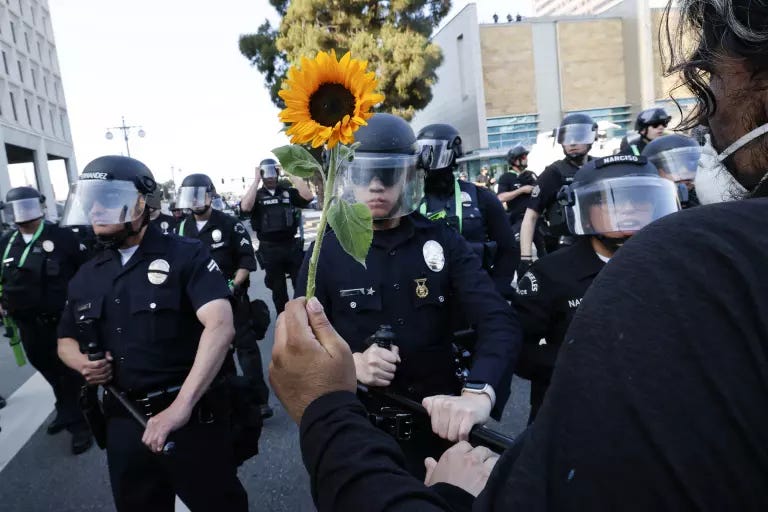
Meeting force with flowers. The image carries obvious echoes—Washington, 1967, when protesters placed carnations in rifle barrels outside the Pentagon. But this flower, anchoring an oncoming squad of LAPD riot cops, tells a more complex story about how peaceful resistance gets weaponized into justification for escalation.
The media coverage of LA's immigration protests has suffered from a fundamental visual bias: it’s been heavily skewed toward violence when the overwhelming public response has been adamantly peaceful. The standoffs that do occur? They're mostly the result of aggressive deployments by local, state, and federal forces—intimidation tactics designed to provoke the very conflicts that justify further crackdowns.
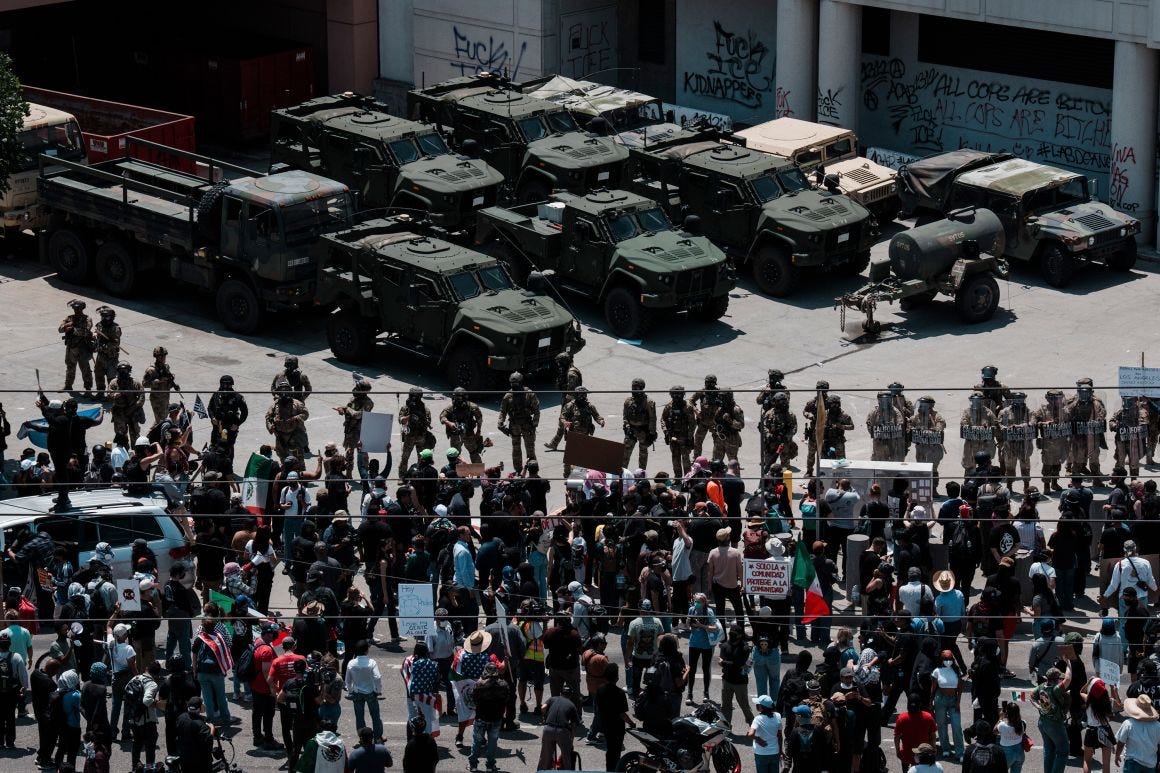
Consider the geography: the actual protest area is tiny, just a few blocks in downtown LA. This minimal footprint exposes the "theater of engagement" for what it is—a stage where Trump needs violence to justify crackdowns and generate sensationally biased imagery for his base.
That's the appeal of Benjamin Dreyer's BlueSky updates from LA. So much blue sky. So little fire.
Jay L. Clendenin's photo captures this perfectly: militarized police in full battle mode while the street appears empty of protesters, photographers documenting the spectacle. It's media critique in a single frame, complete with a "there's your problem" directional arrow.
But plenty of photographers are capturing a different story—one that challenges both the administration's violent narrative and the media's complicity in amplifying it. These are the pictures that tell a different story.
Flowers As Meta
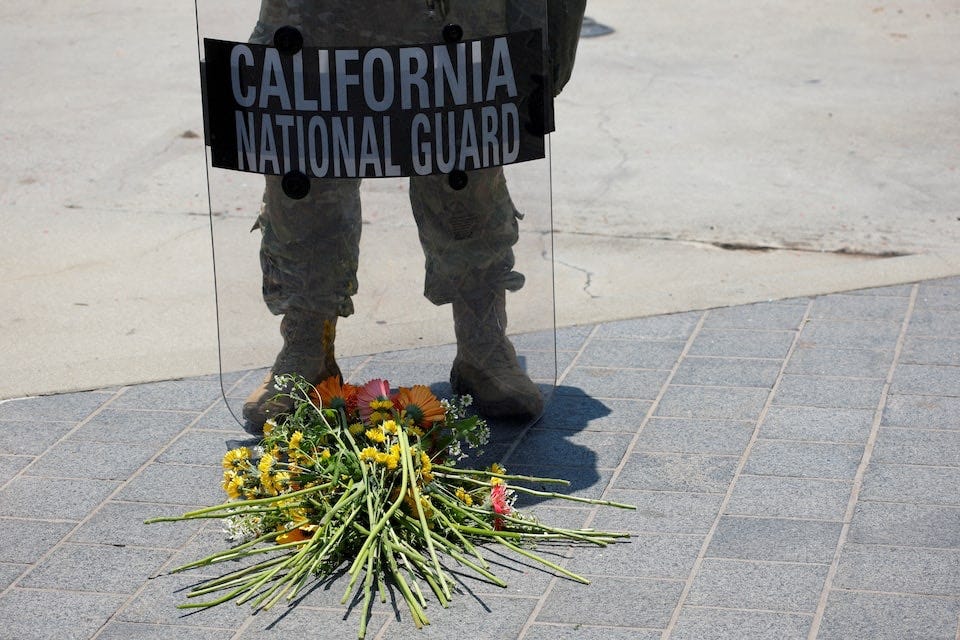
The flower motif appeared again and again in that June 9-11 window, not as a coincidence, but as a visual insistence. Mike Blake's composition captures delicate blooms scattered at the feet of a soldier in full tactical gear. But there's something deeper here than simple peace symbolism. These flowers reframe the entire tableau, transforming "protesters vs. troops" into something more complex: community members offering grace to soldiers caught up in a cynical gambit.
And that's what emerges when you look more closely at the individual faces behind the riot gear.
The Compromise Of Law Enforcement
When you look past the photos of sporadic clashes and stereotypical us-vs-them imagery, you'll find a surprising number of portraits that expose the uncertainty of officers and soldiers stationed against their own communities. This Clendenin shot captures that perfectly—the soldier's expression suggests someone caught between duty and conscience.
The gaze in this photo by Sinna Nasseri is even more curious. Notice what draws the soldier's attention: the figure of the resident in "local uniform," the LA team logo and sports jersey, the everyday markers of local identity. This symbolism makes the officer in blue and his neon riot gear even more of an outlier—foreign elements imposed on familiar ground.
But the personal compromise goes beyond moral conflict. In some cases, the treatment represents outright negligence.
Photos obtained by The San Francisco Chronicle document the reality of Trump's show of force: National Guard troops packed in federal building basements, initially dispensed with "no federal funding available for food, water, fuel or lodging." These aren't warriors—they're casualties of Trump's manufactured crisis, assigned without adequate support for a mission that serves no legitimate security purpose.
The Heart Of Los Angeles—Culture And The Arts
The most radical act in these protests may be the simplest. While Trump's orchestration demands conflict, LA's streets have become stages for something far more subversive—the celebration of local culture.
Take the moral panic over Mexican flags at the protests. The outrage reveals a willful ignorance about what Los Angeles actually is: a megalopolis where Latinos, at 47%, comprise the largest ethnic group by far, Spanish is spoken in over a third of households, and English is not the city’s majority language.
When protesters wave Mexican flags, they're not claiming foreign territory—they're asserting their place in a city that has always been theirs. The photo reflects the amalgam: the flag is Mexican, the fingers spell LA.
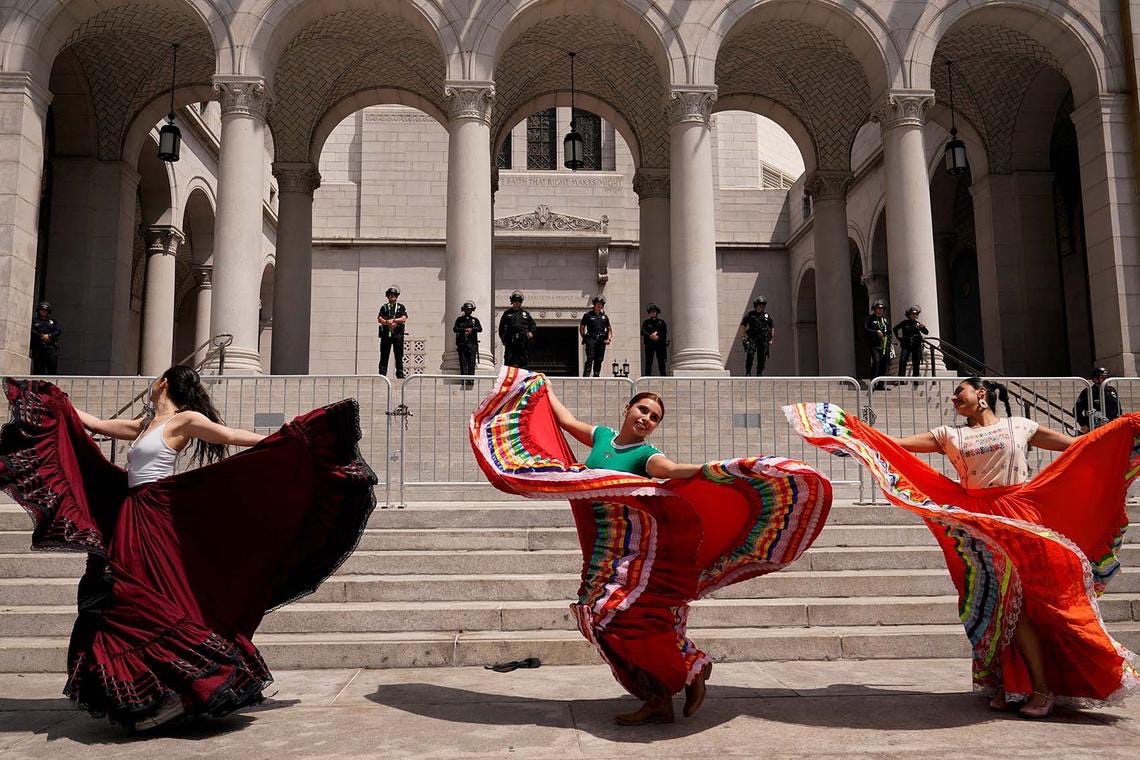
This is what gets lost in the media's obsession with conflict imagery: the joy. Day after day, these protests have featured traditional dancing, music, celebration—expressions of heritage that refuse to be harassed into invisibility. This shot captures women in traditional dress dancing in front of City Hall while police are relegated to the far background.
But perhaps the most perfect visual commentary comes courtesy of artist Barbara Kruger. Jay L. Clendenin's composition captures National Guard troops positioned directly in front of Kruger's installation at The Geffen Contemporary at MOCA, just blocks from the Federal Building. The soldiers become unwitting performers in Kruger's ongoing interrogation of American power, first displayed in 2018:
WHO IS BEYOND THE LAW? WHO IS BOUGHT AND SOLD? WHO DOES THE TIME? WHO SALUTES LONGEST? WHO DIES FIRST? WHO LAUGHS LAST?
Kruger's questions frame these soldiers and Trump's political spectacle with devastating precision.
Love, Faith, And Solidarity
In the face of Trump's calculated cruelty, faith communities have responded with radical scripture. This Bible transforms a personal devotional into public testimony. This isn't prosperity gospel or culture war Christianity—it's the subversive tradition that turns religious texts into resistance documents.
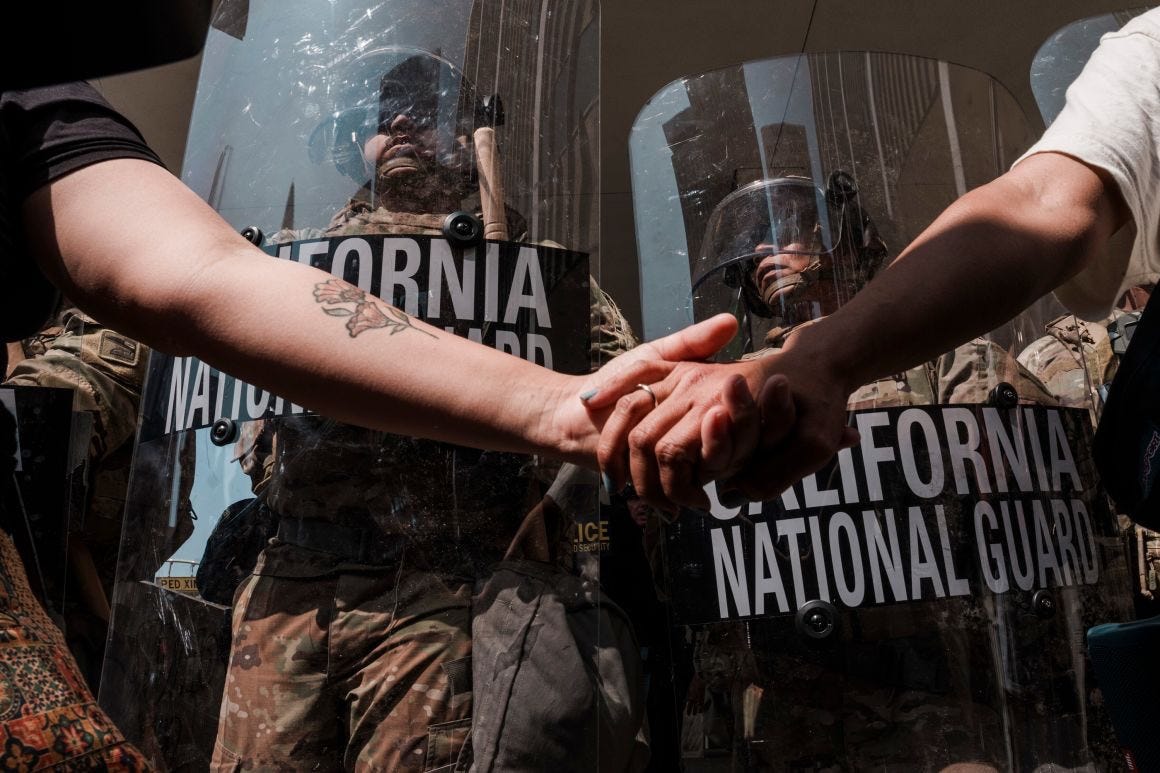
Gabriela Bhaskar's composition captures individual witness scaled to collective solidarity as community members stand their ground.
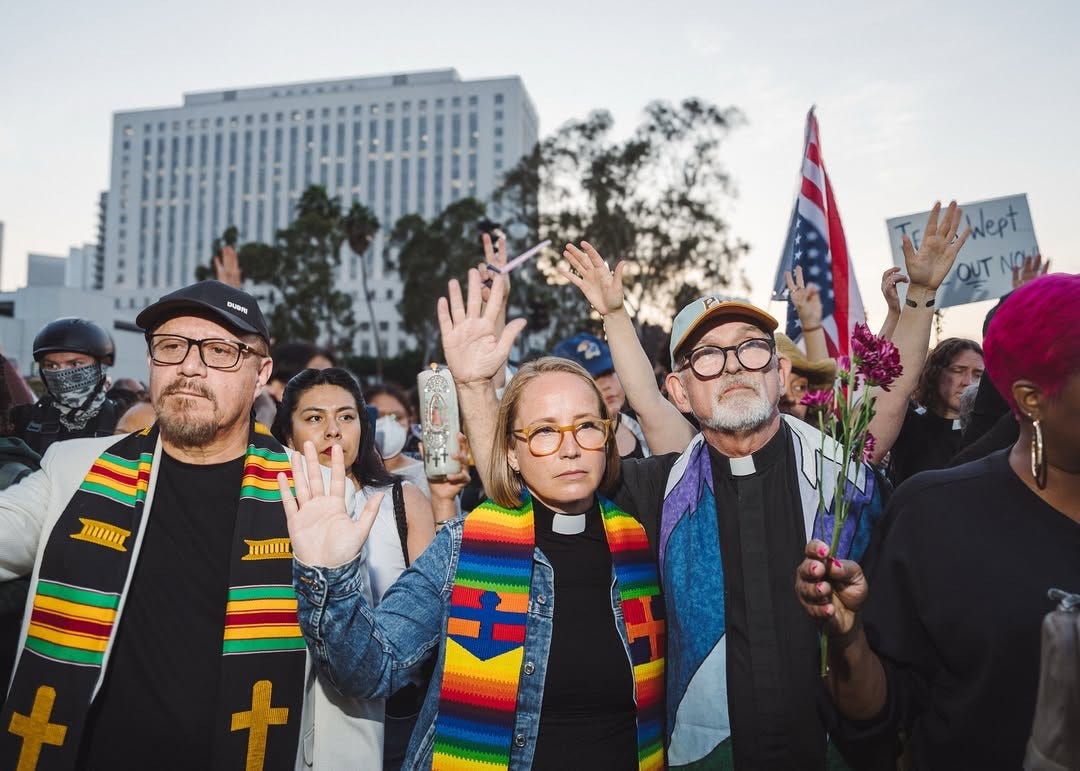
And then comes the ultimate test: religious leaders choosing to stand with their communities in the face of state power. This image, captured just before mass arrests swept the area, shows faith leaders joining the broader resistance, choosing solidarity over safety. In Trump's America, apparently loving your neighbor has become a criminal act.
Salutary Satire
The unintentional comedy of the dancing bubbles perfectly subverts the underlying truth behind this political charade, exposing the absurdity beneath all the tactical gear.
And here we return to that persistent sunflower—the same symbol of peaceful resistance we saw scattered at soldiers' feet. But now the flower serves a different purpose: visual punchline. The photographer's commitment to capturing this single bloom against military boots becomes almost slapstick.
Eric Thayer's photograph delivers the ultimate joke: an officer lost in the weeds. The basic struggle with navigation in an urban landscape embodies Trump's immigration strategy in miniature: overwrought, under-planned, and ultimately self-defeating.
An American Story
For a completely different and more organic view of who belongs and who doesn't, I've included these Instagram photos and this statement from photographer Jordan Gale, taken over those three days.
My grandfather immigrated to the Midwest from Mexico as an infant with his family. He served in the U.S. military during World War II and continually sought to assimilate into American identity. I never heard Spanish spoken in my grandparents’ home, and throughout my life he openly adopted the politics of the Republican Party. Coming to Los Angeles this week and witnessing the protests of a vibrant and proud culture—one I have long wished to feel closer to—has been profound. The response from Los Angeles, particularly the Latino community, is now at the epicenter of America’s push against President Donald Trump’s mass deportation efforts. The culture he avidly pursues is not only influencing the nation at large, but it is also deeply ingrained in today’s American identity. One cannot simply deny that.
—Jordan Gale, Los Angeles, California. 06/09-11/2025
The Heart of the Matter
If I had to choose one photo that captures the crux of Trump's divisiveness and terror campaign—and how it's left "we, the people" to save ourselves—it's this one by Etienne Laurent.
Here's the impossible calculus of resistance in Trump's America: a protester holding a sign declaring absolute confidence in keeping the peace, shrouded in a swirl of tear gas.
The image captures the fundamental contradiction of nonviolent resistance when your opponent's entire strategy depends on provoking violence. It's a document of moral courage under impossible circumstances—and a stark reminder that when democracy fails, the people become its last defenders.
____________________________________
CTP Video
The clash between the state and Angelenos didn't begin last week—residents have resisted since the earliest roundups. Watch our 3-minute Chatting the Pictures video.
Four Months On – How February's LA Protests Foretold Trump's Immigration Crackdown
The resistance in February—Trump's first month back in office—clearly foreshadowed this latest round of confrontation. In this Chatting the Pictures video, Cara Finnegan and I analyze how AP photographer Eric Thayer's image of protesters shutting down LA's 101 freeway reveals the power dynamics and visibility strategies that continue to define LA as a primary target.
Thank you for visiting Reading the Pictures. Despite our visually saturated culture, we remain one of the few sources for analyzing news photography and media images. This post is public, so feel free to share it.
To receive new posts and support our work, consider becoming a free or paid subscriber. As a non-profit organization, your subscription is tax-deductible.



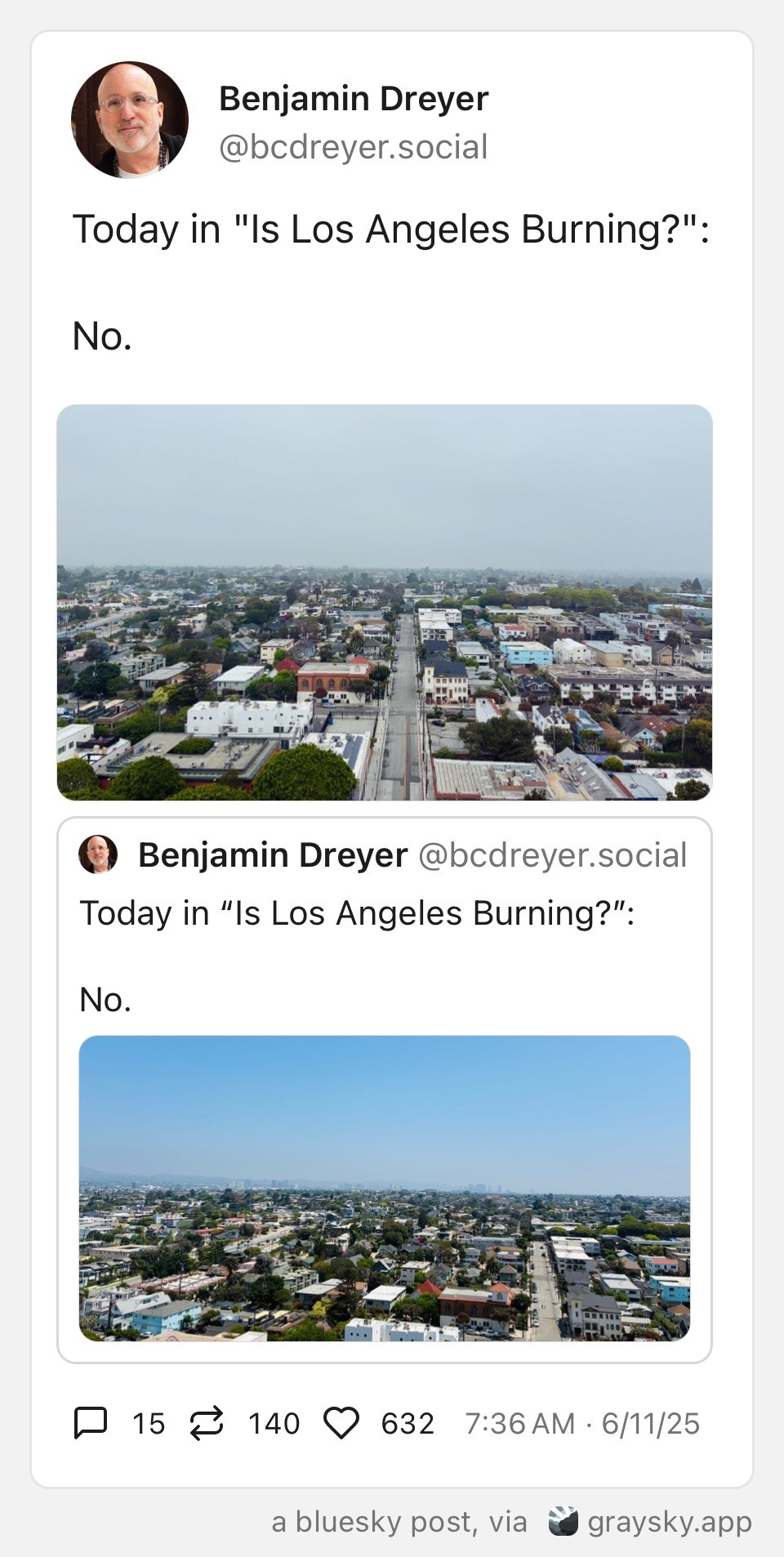


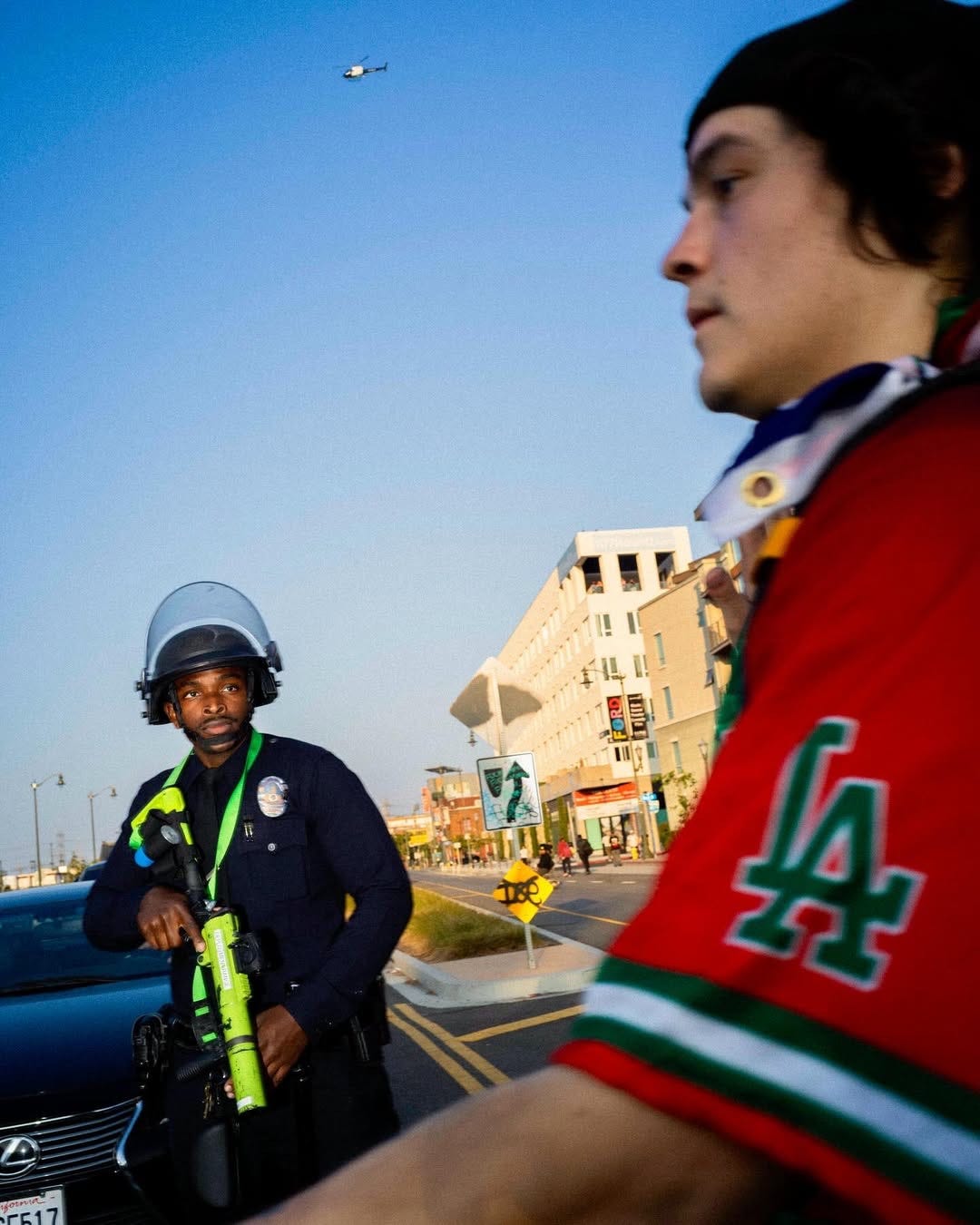
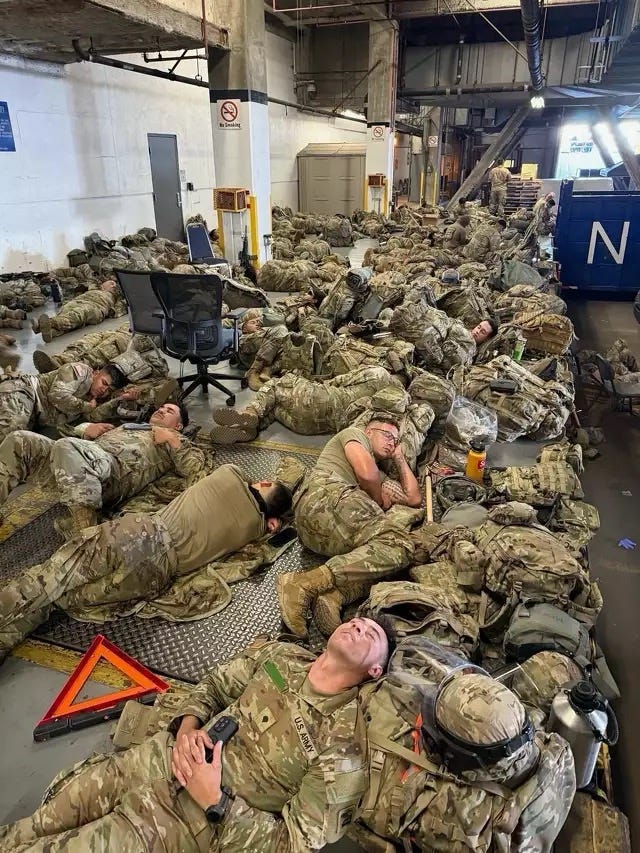
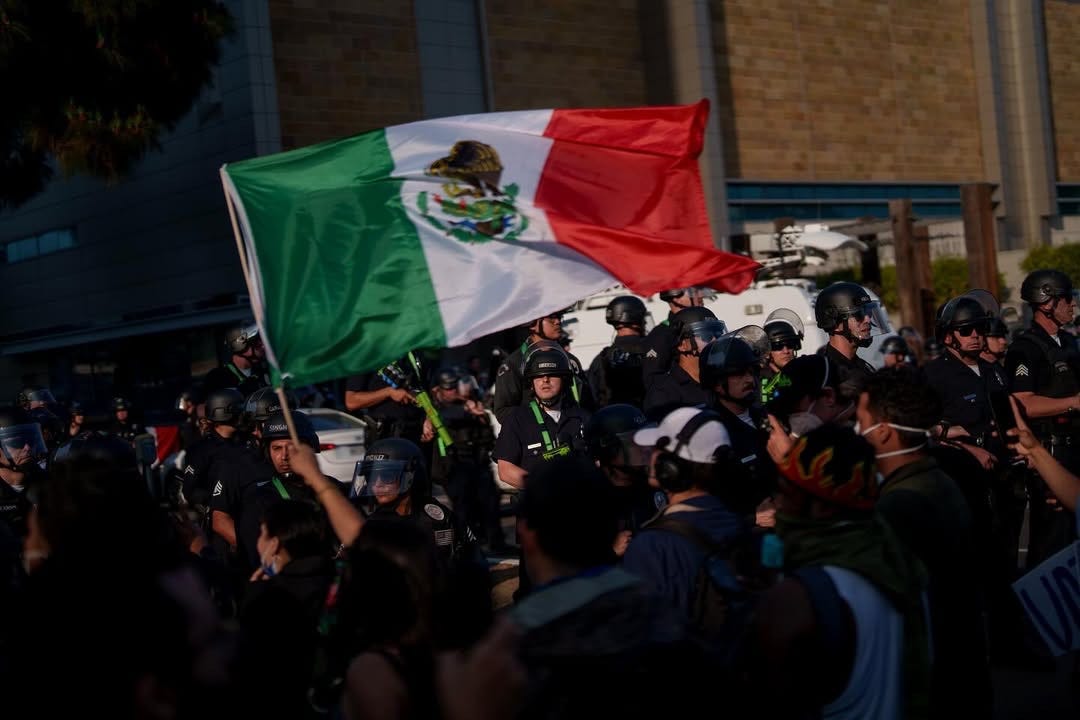
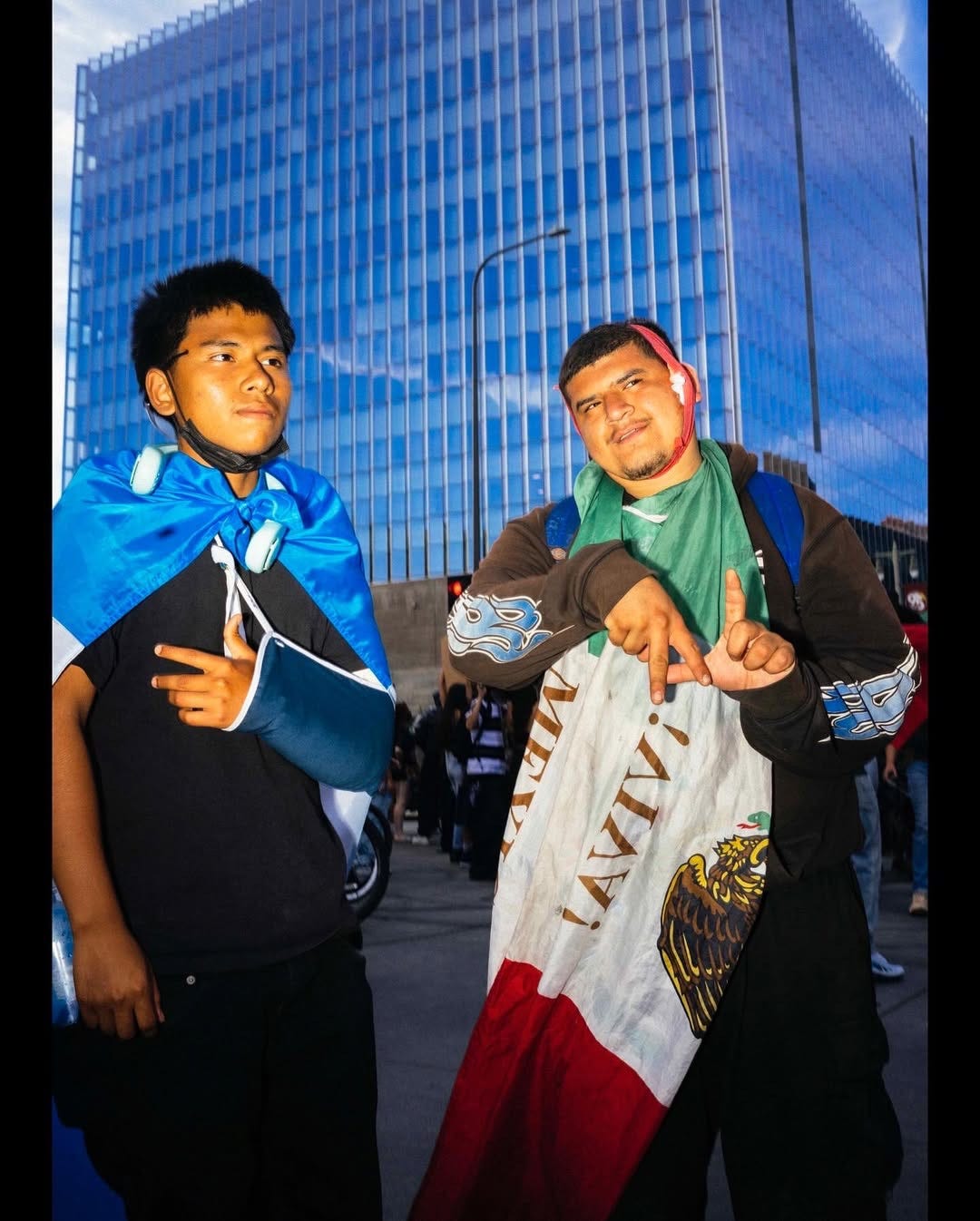
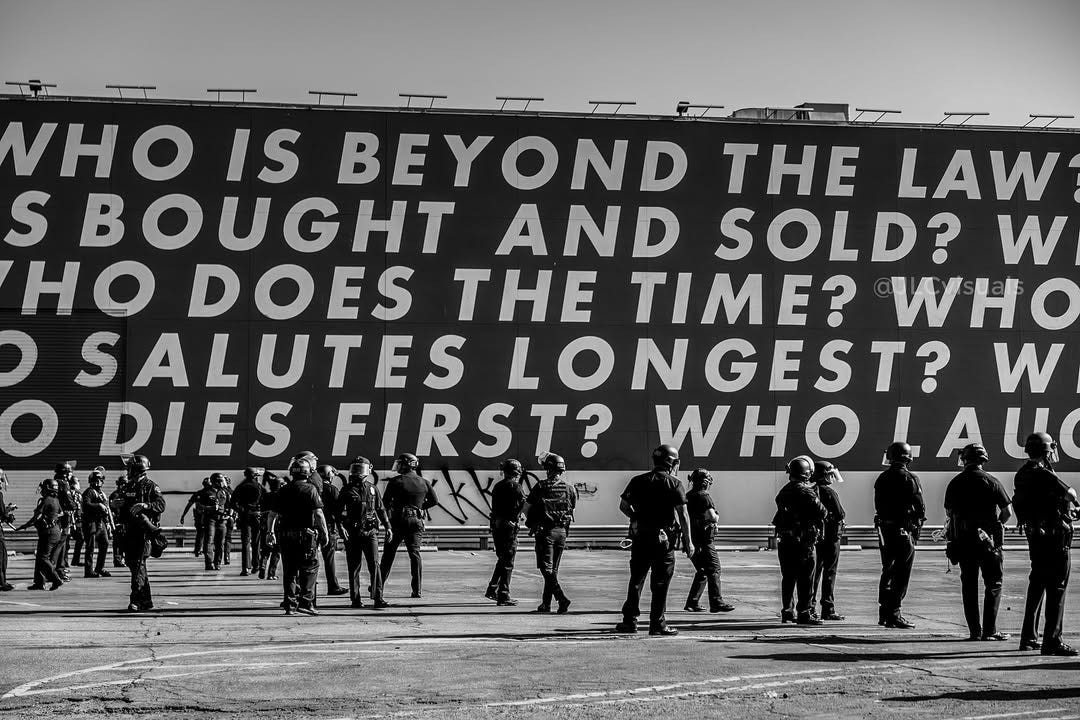
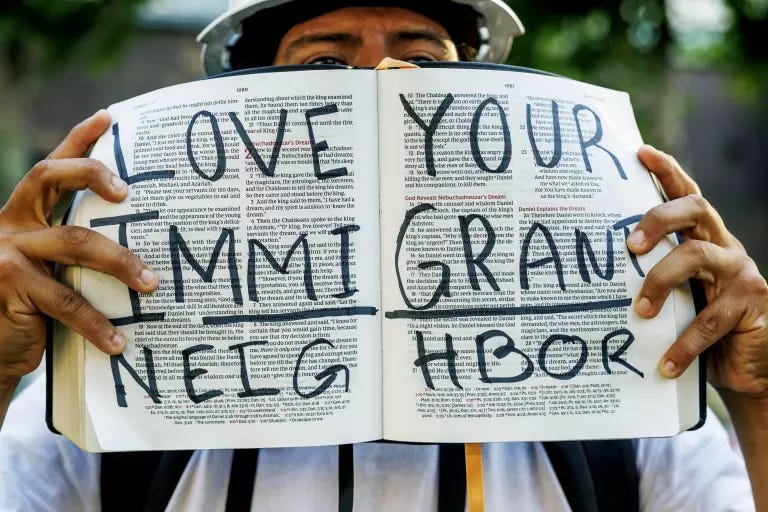
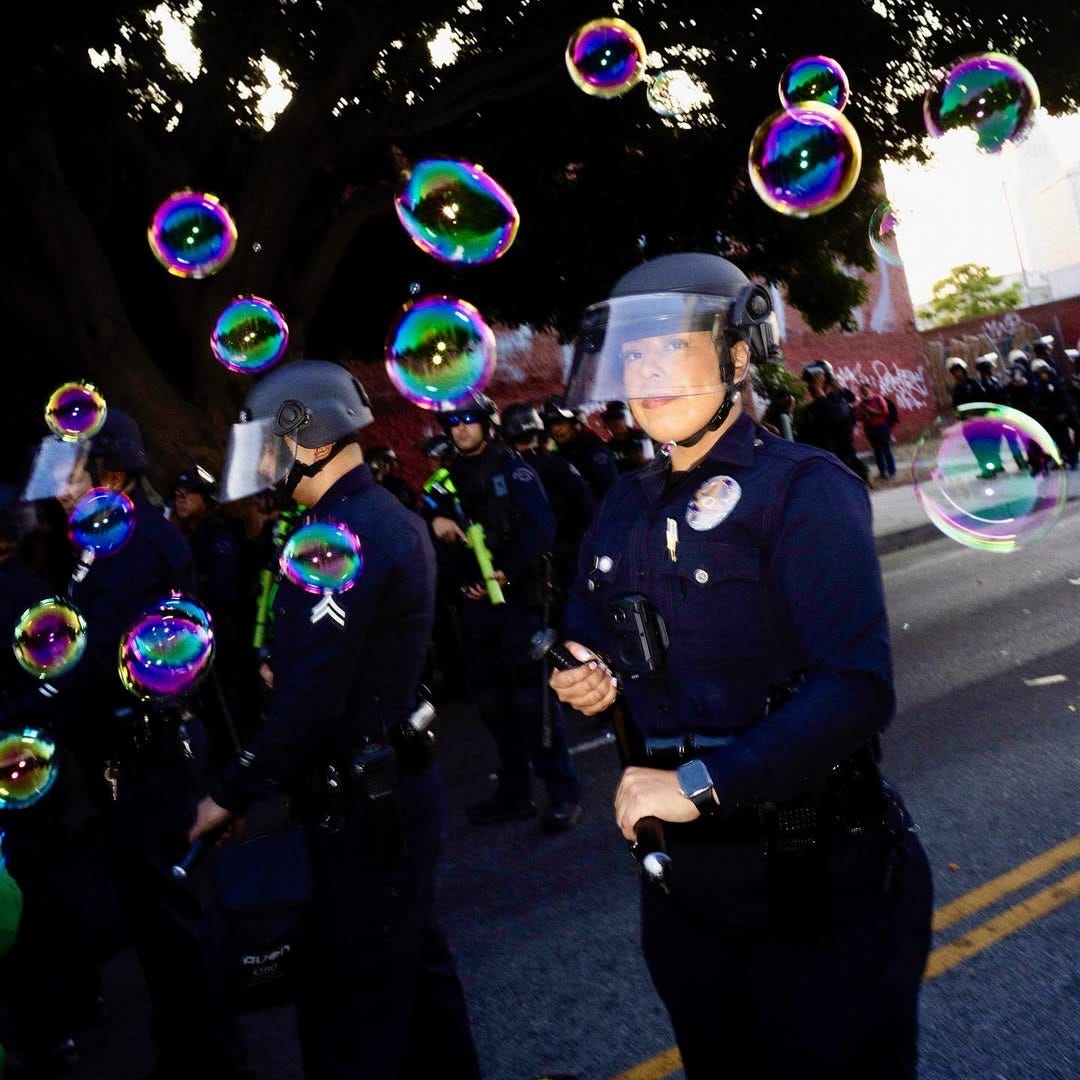
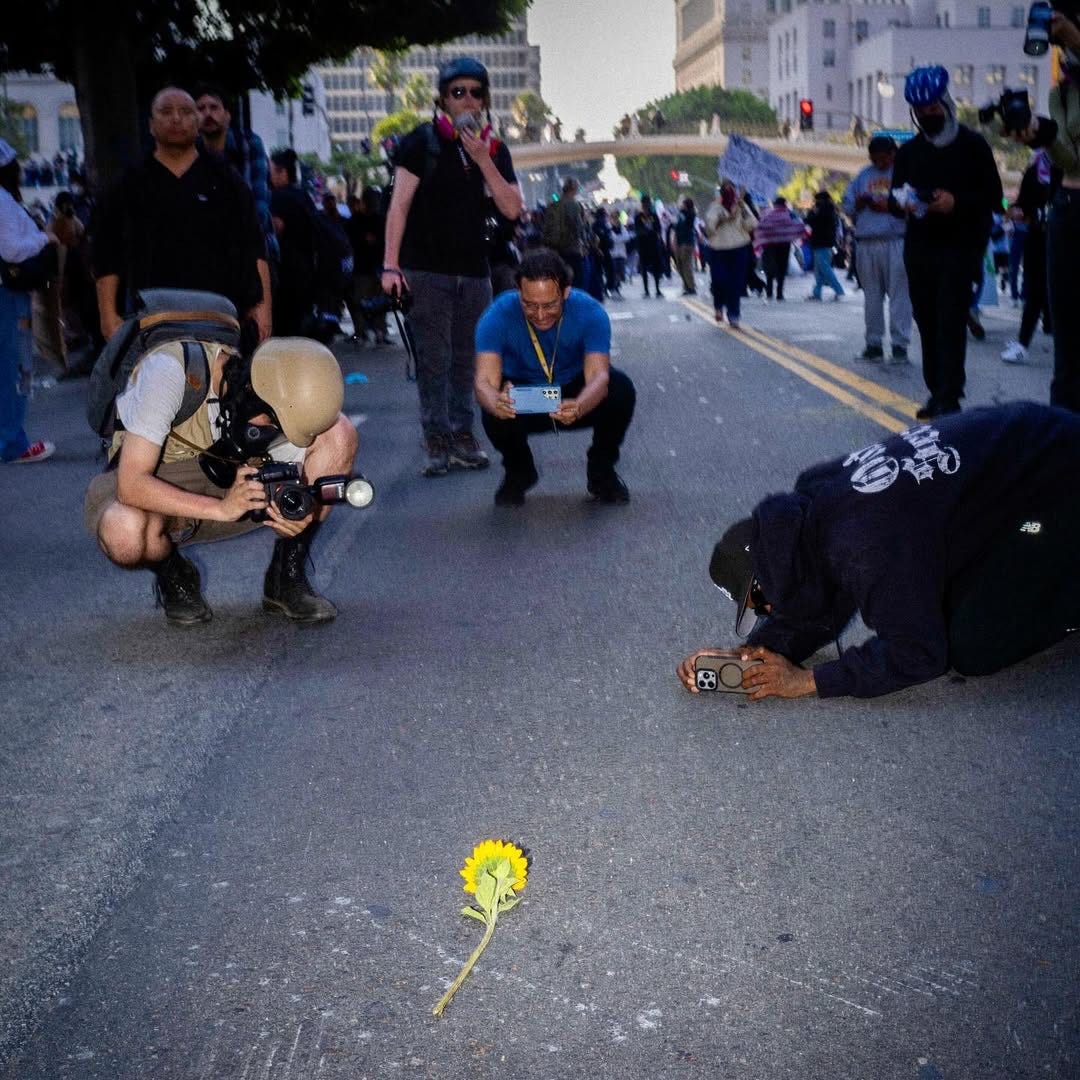
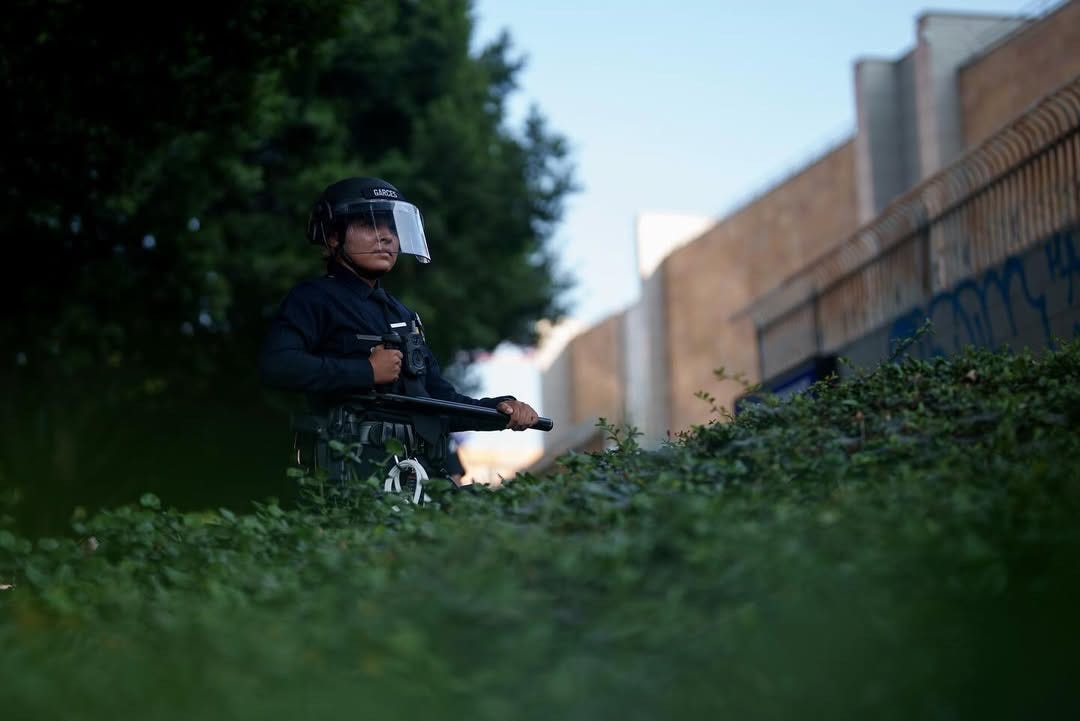
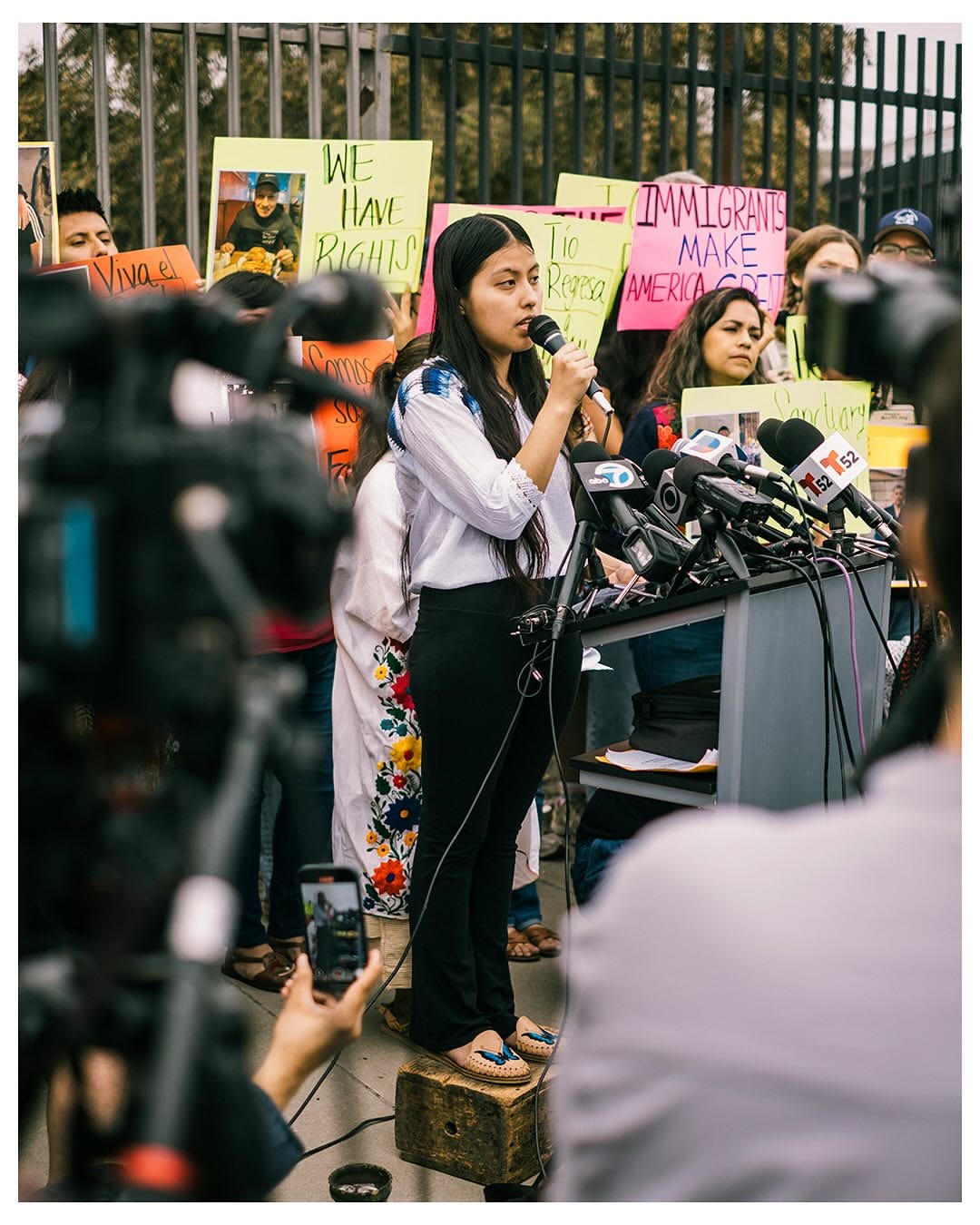
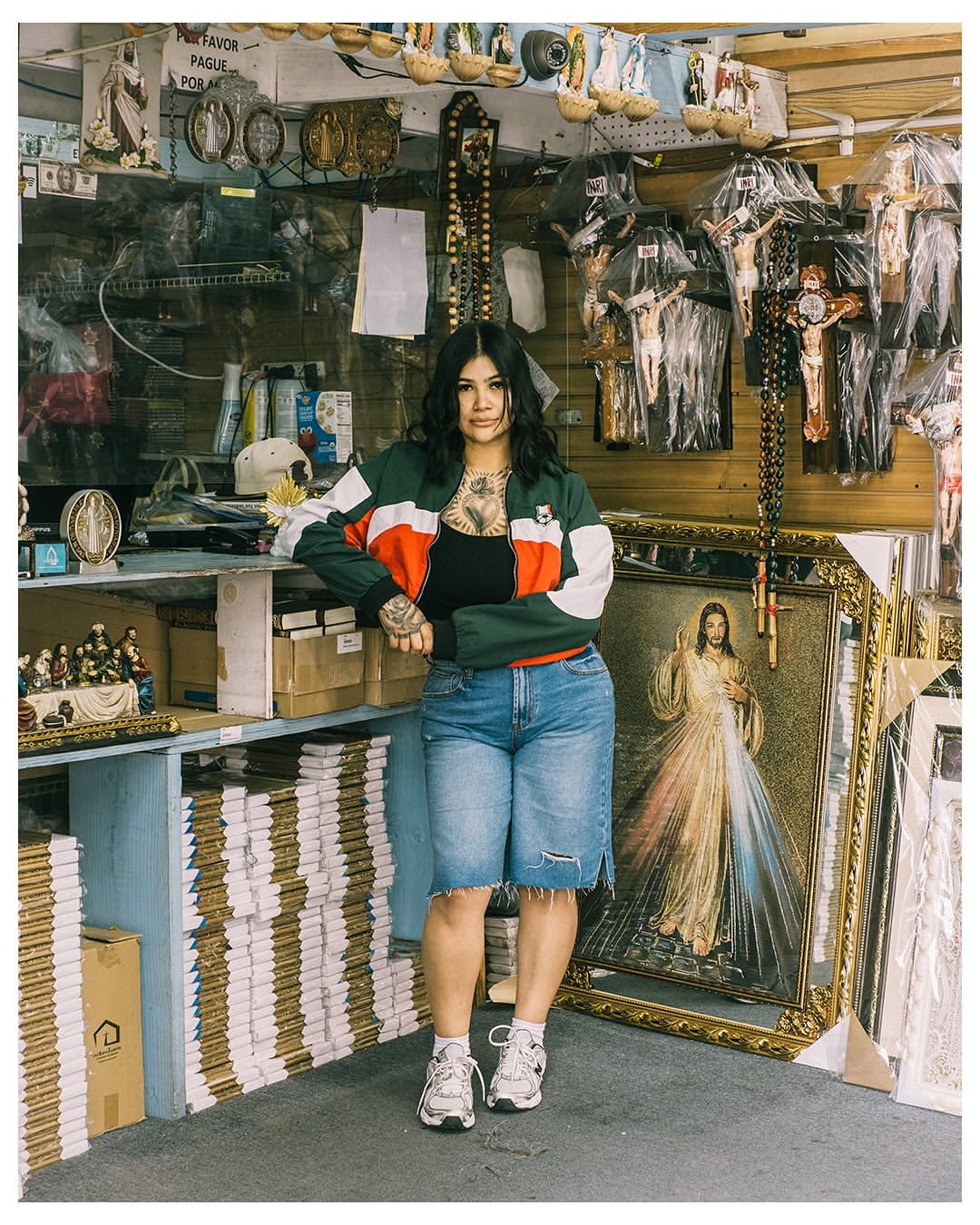
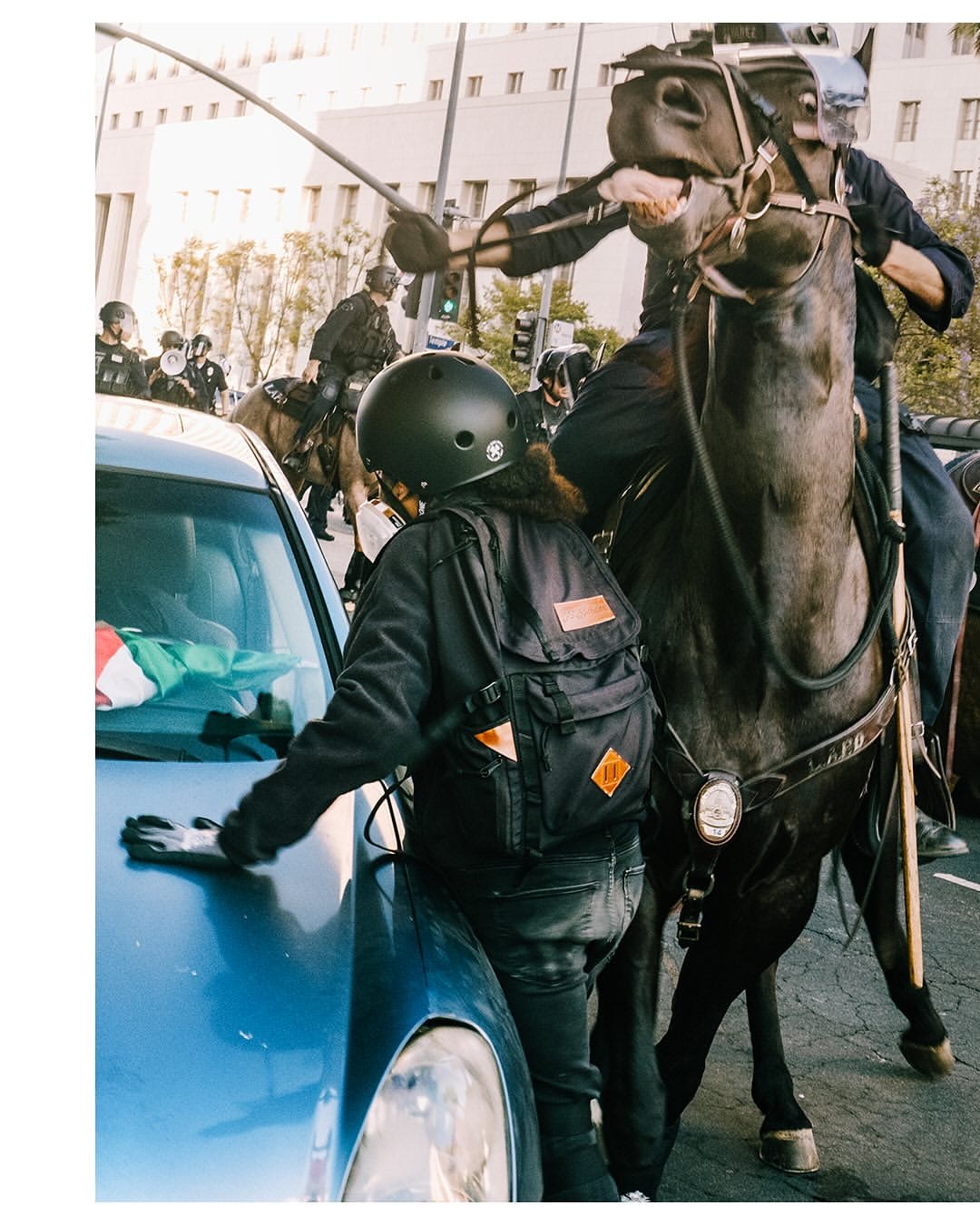

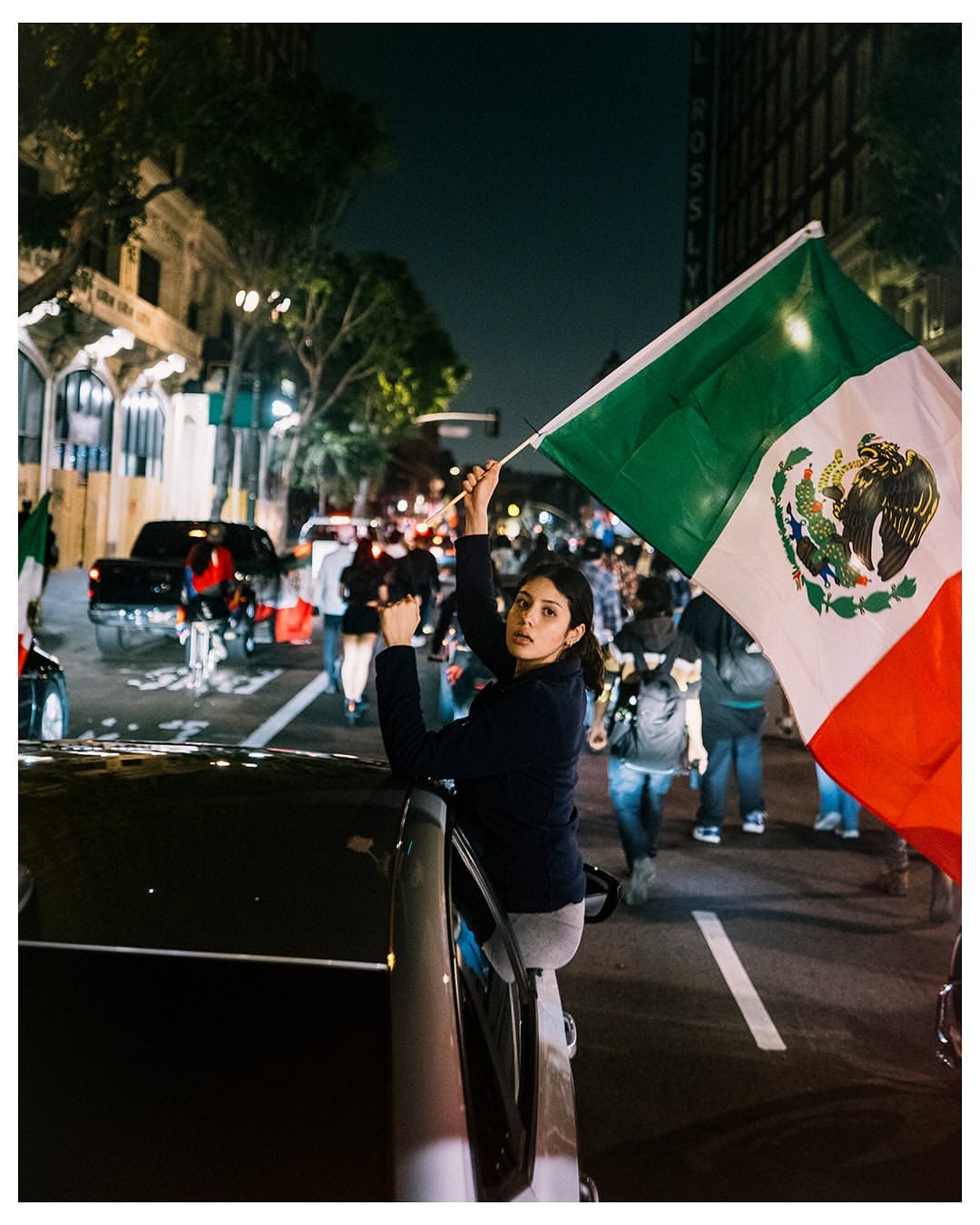

They train to use the horses a “tools” be it shield or barrier.
I was struck by the stunning Instagram pic of the mounted officer using his mount to crowd a presumed protester against a vehicle.
At first glance, the photo gives the impression that the officer is about to strike the individual with a riding crop or the like. Closer examination reveals, thankfully, that the “crop” actually is a street light extension juxtaposed just-so to the officer’s hand.
More disturbing to me is that the officer is clearly weaponizing his steed against the helmeted individual. Notice the wildly aggressive look in the horse’s left eye. Because of similar video I saw earlier this week of mounted officers guiding their horses directly at and over top individuals — and only for this reason — I surmise mounted officers as well as their horses are specifically trained for this tactic. I stand to be corrected.
In any event, I think this is a pretty extraordinarily telling photograph.